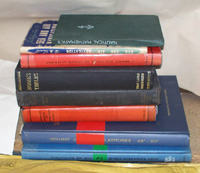 The Hero with a Thousand Faces (1949) Joseph Campbell’s seminal book on comparative mythology discussed his theory of the archetypal hero’s journey found in many of the world’s mythologies. In other words, all myths are basically the same story.
The Hero with a Thousand Faces (1949) Joseph Campbell’s seminal book on comparative mythology discussed his theory of the archetypal hero’s journey found in many of the world’s mythologies. In other words, all myths are basically the same story.
In a well-known quote from the introduction to The Hero with a Thousand Faces, Campbell summarized the monomyth:
A hero ventures forth from the world of common day into a region of supernatural wonder: fabulous forces are there encountered and a decisive victory is won: the hero comes back from this mysterious adventure with the power to bestow boons on his fellow man.
As proposed by Campbell, the hero’s Journey has the following twelve stages:
- ) The ordinary World – the hero is introduced in his home setting.
- ) The Call to Adventure – the hero is confronted with a problem
- ) Refusal of the Call – the hero is reluctant
- ) Meeting with the Mentor – often these stories contain a wise older adviser
- ) Crossing the Threshold – the hero enters a new strange region
- ) Tests, Allies and Enemies – the hero is tested and finds friends (and enemies)
- ) Approach – the hero reaches a dangerous place
- ) The Ordeal – the hero faces a deadly situation. Often it looks as if he’s not going to survive.
- ) The Reward – having survived, the hero gets the elixir, magic sword, knowledge or whatever
- ) The Road Back – hero starts back, chased by vengeful forces, more incidents
- ) The Resurrection – hero emerges from the special world, maybe after another near-death experience
- ) Return with the Elixir – hero returns to his world with the elixir, magic sword, or knowledge.
According to Campbell, myths may not contain all these stages. The myths he drew on for his book include the stories of Osiris, Prometheus, the Buddha, Moses, and Jesus, although Campbell cites many other classic myths from many cultures which rely upon this basic structure.
The resemblance of the ‘hero’s Journey’ to a typical fantasy epic may be notable, but the contention is that the ideas are equally applicable to other kinds of story. Though if one is plotting another kind of story (e.g. a romance), most of the terms will need to be replaced by more appropriate equivalents.
In recent years, Campbell’s Hero’s Journey theories have become more widely disseminated, partly as a result of a well-known memo by Vogler which circulated in the movie industry, and have been studied by film-makers, TV script writers and others interested in telling stories. The popular movie ‘Star Wars’ for instance, was claimed to be influenced by Campbell, and an image from the film appeared on the cover of a reprint of the book.
Other commentators have produced their own variants of Campbell’s ideas, sometimes with differing numbers of stages, or dividing the story into Acts. Extended discussion
